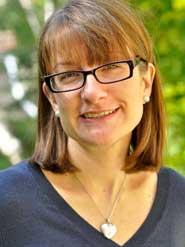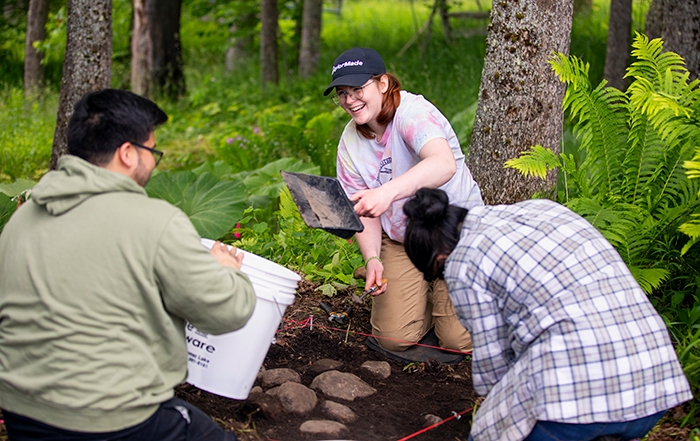Faculty Bio

Hadley Kruczek-Aaron is a historical archaeologist whose research examines the ways that class, gender, race, and religion have been lived in 19th-century America. She explored these topics in her 2015 book Everyday Religion: An Archaeology of Protestant Belief and Practice in the Nineteenth-Century, which focused on archaeology carried out at sites associated with central New York abolitionist Gerrit Smith. Since then, she has continued to explore similar questions at sites across northern New York, including those associated with Civil War soldiers, loggers, reformers, tourists, and farmers (especially those associated with Timbuctoo, a 19th-c. community of African Americans in the Adirondacks that is the subject of this Kilmer lab). Committed to collaborative approaches to archaeology, she has partnered with public institutions, private landowners, descendants, non-profits, and other educators to carry out research and develop curriculum and public programs relating to her work. Hadley, who earned her Ph.D. from Syracuse University, has been a professor at SUNY Potsdam since 2005.
Project Abstract
Research carried out as part of the Timbuctoo Archaeology Project aims to reveal details about the everyday lives of those connected with a mid-19th-century reform experiment that brought hundreds of Black New Yorkers to the Adirondacks to establish farms, gain the right to vote, and fight against slavery. Students involved in this work will document how a diverse set of 19th-century Adirondackers responded to the challenges of their environment and will clarify how their material worlds and farm landscapes changed over time. This work remains significant since little research of this nature has been done in the region, and because many of these historical figures (as women, as African Americans, and/or as members of the working class) have either been left out or misrepresented by early historians of the period. Thus, the data recovered as part of this Kilmer Lab give us the chance to craft new narratives about Adirondack and American history.
"The Timbuctoo story is one of courage, family, community, survival, and resistance in the wake of injustice. It pushes us to challenge what we think we already know about our history. And it helps us understand the roots of present-day inequities and inform efforts on behalf of justice in the present and future. Given all of this, I can say without hesitation that it has been the most meaningful research of my career."
Department Chair and Professor, Anthropology
Archaeology Field School
Questions?
Students interested in participating in any of these projects can contact Dr. Hadley Kruczek-Aaron at kruczehf@potsdam.edu or (315) 267-2072.

